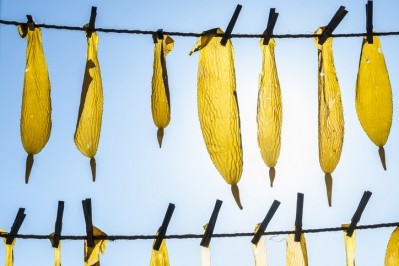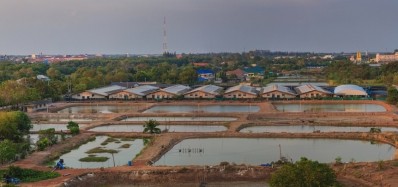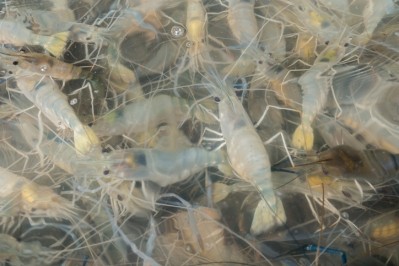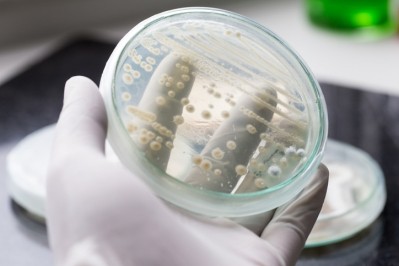Prebiotic use in feed may boost shrimp survival
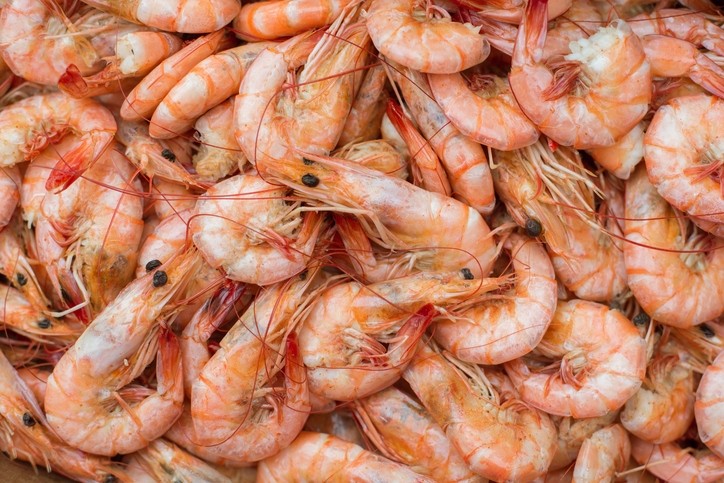
A team of researchers from the University of Santa Catarina and the Federal Institute of Santa Catarina examined the use of prebiotics in feed for farmed shrimp facing a disease challenge. The group published its work in the journal Aquaculture.
Although there have been studies examining the use of probiotics in biofloc systems, none have tracked the use of prebiotics in feed for shrimp raised in a biofloc system, and no work with mannoproteins (MP) in shrimp feed has been done, the researchers said. “This study aimed to evaluate the effects of dietary supplementation with mannoproteins on the performance, immune response, and midgut intestinal villi of L. vannamei raised in a biofloc system,” they added.
The researchers found that adding the prebiotic supplement improved shrimp survival in an intensive production system.
“Dietary supplementation of mannoprotein in L. vannamei reared in a super-intensive biofloc system increases shrimp survival,” they said. “Additionally, dietary supplementation in doses 0.12% increases the width, length and perimeter of intestinal villi, and higher doses of MP (0.12%) increase superoxide anion production after infection with V. parahaemolyticus.”
Why mannoprotein in shrimp feed?
One of the most produced farmed shrimp is Pacific White shrimp, Litopenaeus vannamei, the researchers said. Although there has been an expansion in global production, there can be regional production challenges stemming from viral and bacterial diseases.
Diseases could be triggered by several elements including adverse climatic conditions, toxic compounds in water, eutrophication, dietary deficiency and the accumulation of organic matter, they said. Acute Hepatopancreatic Necrosis Syndrome (AHPNS) caused by Vibrio parahaemolyticus has resulted in high mortality rates for farmed shrimp.
However, there are concerns about the use of antibiotics to treat bacterial infections, including the risk of developing antibiotic-resistance disease strains, they said. One alternative is using feed additives.
“Among the many types of additives used, prebiotics can act as modulators of intestinal mucus, promoting the development of healthy bacteria and reducing colonization of pathogenic species,” said the researchers. Prebiotics act to boost an animals’ intestinal microbiota by stimulating growth or actions by some bacteria and supporting health, they added.
In aquaculture, some commonly used prebiotics are fructooligosaccharides (FOS), galacto-oligosaccharides (GOS), and mannan-oligosaccharides (MOS), which have been linked to increased intestinal villi and microvilli, improved immune response and improved growth performance, they said. “Despite preliminary studies on the use of prebiotics in aquaculture, the mannoprotein (MP) derived from yeast cell walls of Saccharomyces cerevisiae has not yet been studied in shrimp farming,” they added.
Along with using feed additives to improve shrimp productively, a biofloc production system may be another option, they said.
“By increasing rearing density, this system increases productivity since heterotrophic bacteria control the buildup of nitrogen compounds, along with chemoautotrophic bacteria in microbial bioflocs,” they said. “In this rearing system, the chance of introducing pathogens and disease vectors is reduced because less water renewal is needed to maintain water quality for the reared animals.”
Methods and materials
In the feeding trial, shrimp were given diets with one of three levels of MP – 0.02%, 0.08% and 0.12% – for a period of 65 days, the researchers said. An additional group acted as a control and received a non-supplemented feed.
Histology of the midgut and growth measurements were assessed at the end of the feeding trial, they said. Shrimp were measured for weekly weight gain, final biomass, survival and feed efficiency.
Also on day 65, 10 shrimp from each experimental unit were collected and injected with V. parahaemolyticus or saline for a control, they said. Shrimp were then watched for 48 hours for survival and assessed for immunological parameters.
Results
Overall, shrimp getting one of the supplemented diets had about a 10% increase in survival rate, the researchers said.
Shrimp that were given the diets with 0.08% or 0.12% of the feed additive demonstrated larger internal surface area in their intestinal villi, they said. However, no differences were noted for final weight, weekly weight gain, final biomass or feed efficiency.
After infection with Vibrio parahaemolyticus, all shrimp had similar mortality rates, although shrimp getting the 0.12% diet tended to see improved survival, they said.
Before infection all shrimp had similar immunological parameters, they said. “However, after infection, the production of superoxide anion at 0.12% treatment showed significant differences compared to the other treatments, showing higher ROI values,” they added.
Source: Aquaculture
Title: Mannoprotein dietary supplementation for Pacific white shrimp raised in biofloc systems
Authors: Marysol Rodrigues, Norha Bolívar, Esmeralda Legarda, Ariane Guimarães, Cristhiane Guertler, Carlos Santo, José Mouriño, Walter Seiffert, Débora Fracalossi, Felipe Vieira
DOI: doi.org/10.1016/j.aquaculture.2018.01.025
